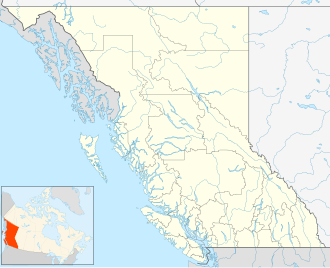| Finlay-Russel Provincial Park and Protected Area | |
|---|---|
 Interactive map of Finlay-Russel Provincial Park and Protected Area | |
| Location | Peace River RD, British Columbia, Canada |
| Coordinates | 57°32′59″N126°11′59″W / 57.54972°N 126.19972°W |
| Area | 109,205 ha (421.64 sq mi) |
| Established | April 4, 2001 |
| Governing body | BC Parks |
| Website | Finlay-Russel Provincial Park |
Finlay-Russel Provincial Park and Protected Area is a provincial park in British Columbia, Canada. It is part of the larger Muskwa-Kechika Management Area. [2] The park is a 85-km corridor that goes along the Finlay River, stretching between the Fox River confluence and the Toodoggone River confluence. [3]
In the protected area, cycling and hunting are allowed, along with wilderness camping. Those who are cycling cannot use e-bikes off of the designated roads unless using specifically authorized trail maintenance bikes. [4]
